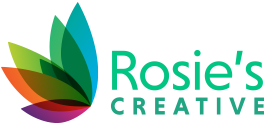
Open for Business: The Open Source Way, Explained
 Amid an always-competitive marketplace and an economy still shaking off the effects of the pandemic, small businesses and local nonprofits today face strong headwinds as they seek to grow their brand and connect with target audiences. Here at Rosie’s Creative, we strive to deliver results and help you get maximum mileage out of every dollar spent – and one great way to accomplish this is with open source software and resources.
Amid an always-competitive marketplace and an economy still shaking off the effects of the pandemic, small businesses and local nonprofits today face strong headwinds as they seek to grow their brand and connect with target audiences. Here at Rosie’s Creative, we strive to deliver results and help you get maximum mileage out of every dollar spent – and one great way to accomplish this is with open source software and resources.
It’s often assumed that “open source” is just another way to say “free” – and while it’s true that open source software and resources typically come free of cost to users, there’s a bit more to the concept than just dollars and cents. To better understand what open source really means, let’s take a look at the origins of the term…
OPEN SOURCE vs. PROPRIETARY
While the term is used more broadly today, the concept of “open source” has its roots in the world of software development. In its original context, the term describes software with source code that is available for anyone to access, modify, and redistribute – in contrast with “proprietary” or “closed source” software, which has source code that is only accessible to its creators or owners, who maintain exclusive rights over distribution, and exclusive control over any changes to the code.
For a great example of open source versus proprietary software, look no further than the impressive range of content management systems on the market today. At Rosie’s Creative, we use the open source CMS WordPress for most of our new website builds, and a big reason is the flexibility and scalability it offers, in large part precisely because it is an open source platform. That’s not to say proprietary platforms are bad, of course – for businesses looking for a no-fuss, all-in-one online storefront to jumpstart their e-commerce efforts, top platforms like Square and Shopify can provide a solid foundation to build on.
The concept may have originated with coders and developers, but today, “open source” has taken on a life of its own, with artists and content creators embracing the open source ethos by using licensing options designed to make their works more open and shareable, like the Creative Commons licenses for multimedia works, and the SIL Open Font License for typefaces.
It’s important to realize, though, that “open source” doesn’t mean “no strings attached.” Just as with proprietary software and resources, open source styled licenses have certain terms and conditions that you’ve got to be careful to follow. For instance, certain Creative Commons licenses allow modification of the original content while others don’t, and some are explicit in allowing only noncommercial usage while others have no such restrictions. Understanding these distinctions is vital to making the most of open source assets – and avoiding headaches down the road!
Want to learn more about how “the open source way” can impact your marketing efforts? Contact us at Rosie’s Creative – and remember, with us, your first consultation is always free!
